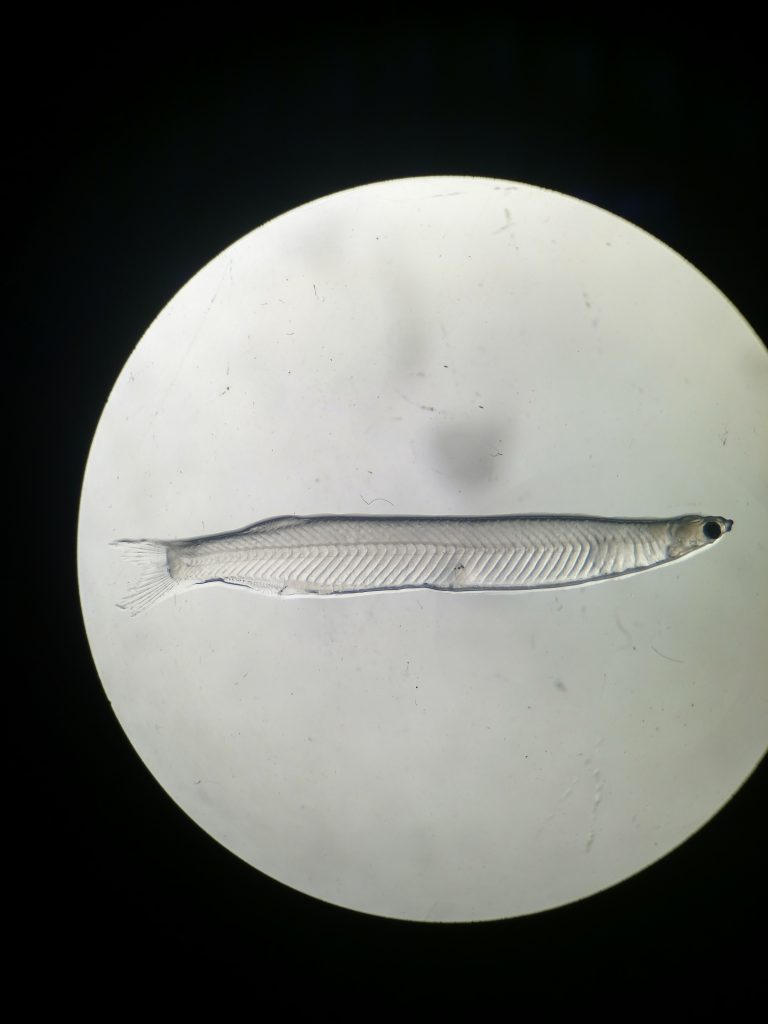Larval Tarpon: A Survivor Story
JoEllen K. Wilson, BTT Juvenile Tarpon Habitat Manager
What do tarpon and honest politicians have in common? They both start out small and most never make it to be big fish. Some would say that at least one of these is a mythical creature, or those chasing tarpon with a fly rod know better – they both are. Our last article (‘Tis the Season for Tarpon) discussed the inner workings of the tarpon spawn. Now we’ll get into the toughest stage of the tarpon life cycle – the larval period.
Adult tarpon spawn in the summer offshore by releasing their sperm and eggs into the open water – known as broadcast spawning. A small fraction of the eggs will be fertilized, eventually hatch and the larval stage begins and lasts about 30 days. A tarpon larva, known as a leptocephalus, is similar to the larva of eels, bonefish and ladyfish, but look more like a worm than a fish. Although they are large enough to be seen without a microscope, leptocephali are transparent, aside from a large eye and translucent muscle structure composed of myomeres. Leptocephali look extremely similar, but each species can be distinguished by counting the number of myomeres.
Click here to read the full article in Coastal Angler Magazine.




